Inhalers & Nebulizers
An Inhaler or Puffer is a hand-held portable device which delivers medication directly to your lungs. A variety of asthma inhalers are available to help control asthma symptoms in adults and children. There are many different types of inhaler. It is mainly used in the treatment of asthma and Chronic Obstructive Pulmonary Disease (COPD). This section gives information on the various types of inhaler devices, and some general information about inhalers.
Inhaler devices
Different inhaler devices suit different people. Inhaler devices can be divided into four main groups:
Pressurised Metered Dose Inhalers (MDIS).
Breath Actuated Inhaler/Dry Powder Inhaler – Single Dose
Breath Actuated Inhaler/Dry Powder Inhaler- Multidose
Nebulisers



Metered Dose Inhaler
Metered Dose Inhaler is good way to take asthma medications. It is fast acting. It takes only 5 to 10 minutes for medicines to take effect as compared to liquid asthma medications, which takes 1 to 3 hours.



How to use inhaler without spacer?
Remove the cap and hold the spacer upright
Hold the inhaler with two finger up and one finger down
Breath the air gently through your mouth completely
Put the mouth piece of inhaler in your mouth between your teeth and close your lips around it. do not bite the inhaler
Press the inhaler to release the medicine only once, this is your first puff
Breathe in slowly and hold your breath for 10 second to allow the medicine to reach deeply in your lungs.
Repeat the above steps for your second puff after waiting for a minute.
Care and cleaning of MDI
It is very important to keep the plastic actuator clean, so the medicine will not build up and block the spray. See Figure A
Do not try to clean the metal canister or let it get wet. The inhaler may stop spraying if it is not cleaned correctly
Wash the actuator at least once a week as follows:

Take the canister out of the actuator, and take the cap off the mouthpiece. The strap on the cap will stay attached to the actuator
Step 1
Hold the actuator under the faucet and run warm water through it for about 30 seconds. See Figure B
Step 2
urn the actuator upside down and run warm water through the mouthpiece for about 30 seconds. See Figure C
Step 3
Shake off as much water from the actuator as you can. Look into the mouthpiece to make sure any medicine build-up has been completely washed away. If there is any build-up, repeat Steps 2 and 3
Step 4
Shake off as much water from the actuator as you can. Look into the mouthpiece to make sure any medicine build-up has been completely washed away. If there is any build-up, repeat Steps 2 and 3
Step 5
When the actuator is dry, put the canister in the actuator and make sure it fits firmly. Shake the inhaler well and spray it once into the air away from your face. (The counter will count down by 1 number.) Put the cap back on the mouthpiece
Step 6
If you need to use your inhaler before the actuator is completely dry:
Shake as much water off the actuator as you can
Put the canister in the actuator and make sure it fits firmly
Shake the inhaler well and spray it once into the air away from your face
Take your VENTOLIN HFA dose as prescribed
Follow cleaning Steps 1 through 6 above
Metered Dose Inhaler with Spacer
How to use spacer with metered dose inhaler?
Assemble the inhaler by fixing the two halves of spacer together.
Remove the cap and hold the spacer upright
Hold the inhaler with two finger up and one finger down
Breath the air gently through your mouth completely
Put the mouth piece of inhaler in your mouth between your teeth and close your lips around it. Do not bite the inhaler
Press the inhaler to release the medicine only once, this is your first puff
Repeat the above steps for your second puff after waiting for a minute.
Advantage of using spacer
Overcome the coordination problem with inhaler
Facilitates the large doses of bronchodilators
Reduces the drug deposition in mouth and pharynx
Increase the drug deposition in lungs
Easy inhalation for children <3 years with a face mask attached to it.
Care and cleaning of spacer
Separate the two parts of spacer
Immerse it in warm water and mild detergent
After half an hour take the spacer out rinse in cold water and shake the excess water of the spacer
Keep the spacer under the fan to dry
Do not keep it under the sunlight or wipe with the cloth
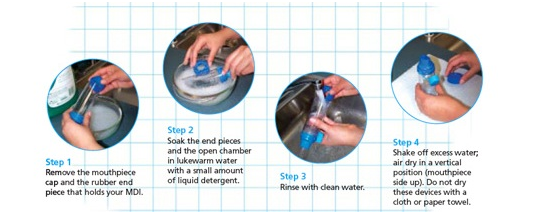
Breath Actuated Inhaler/Dry Powder Inhaler
These are alternatives to the standard MDI. Some are still pressurised MDIs, but don’t require you to press a canister on top. The autohaler shown on the right is an example. Another example of a breath-activated MDI is the easi-breathe inhaler. Other breath-activated inhalers are also called dry powder inhalers. These inhalers do not contain the pressurised inactive gas to propel the drug. You don’t have to push the canister to release a dose. Instead, you trigger a dose by breathing in at the mouthpiece. Accuhalers, rotahaler, turbohaler, and diskahaler are all breath-activated dry powder inhalers. You need to breathe in fairly hard to get the powder into your lungs. Some types are shown below.
1
Rotahaler
2
Diskahaler

3
Turbohaler
4
Accuhaler

Rotahaler
Hold rotahaler vertically and put capsule (clear End first) into square hole. Make sure top of Rotacap is level with top of hole. (If there is a Rotacap already in the device this will be pushed into shell)
Hold rotahaler horizontally, twist barrel sharply Forwards and backwards. This splits capsule into two.
Breathe out gently. Keep rotahaler level and put Mouthpiece between lips and teeth and breathe in the powder quickly and deeply.
Remove rotahaler from mouth and hold breath for About 10 seconds.
If any powder is left repeat steps 3 and 4.
Open the Rotahaler and discard the empty Capsule.
Cleaning and Care for the Rotahaler
Clean the Rotahaler once every two weeks or sooner if needed. Regular cleaning will prevent powder accumulation inside the Rotahaler.
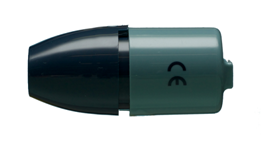
Remove the empty capsule shell before washing the Rotahaler
Rinse the two halves of your Rotahaler in warm water.
Shake off any excess water.
Dry your Rotahaler thoroughly before reassembling it.
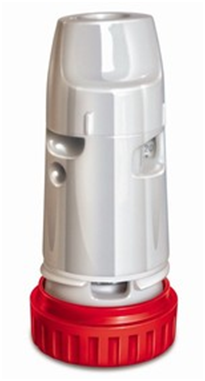
Turbo haler
Turbuhalers are a tube-shaped inhaler which has the medication inside in the form of a dry powder. They have a removable cover and a twisting base. The device is ‘breath-activated’ which means the dry powder medication is ‘sucked’ from the device rather than ‘fired’ like it is from other devices.
Turbuhalers may be difficult to use for young children, or adults who are short of breath. It is recommended to have a puffer and spacer available for emergencies.

How to use a Turbohaler
Unscrew and lift off white cover. Hold turbohaler upright and twist grip forwards and backwards as far as it will go. You should hear a click
Breathe out gently, put mouthpiece between lips and breathe in as deeply as possible. Even when a full dose is taken there may be no taste
Remove the turbohaler from mouth and hold breath for about 10 seconds. Replace the white cover.
Turbuhaler tips
To clean the Turbuhaler, wipe the mouthpiece with a clean dry tissue
Avoid breathing into the Turbuhaler
It is important not to get any part of the device wet
Always keep the cap on when not in use
Diskhaler
A Diskhaler is a dry-powder inhaler that holds small pouches (or blisters), each containing a dose of medication, on a disk. The Diskhaler punctures each blister so that its medication can be inhaled.

How to use your Diskahaler
Remove the cover and check that the device and mouthpiece are clean.
If a new medication disk is needed, pull the corners of the white cartridge out as far as it will go, then press the ridges on the sides inwards to remove the cartridge.
Place the medication disk with its numbers facing up on the white rotating wheel. Then slide the cartridge all the way back in.
Pull the cartridge all the way out, then push it all the way in until the highest number on the medication disk can be seen in the indicator window.
With the cartridge fully inserted, and the device kept flat, raise the lid as far as it goes, to pierce both sides of the medication blister.
Move the Diskhaler away from your mouth and breathe out as much as you can until no air is left in your lungs.
Place the mouthpiece between your teeth and lips, making sure you do not cover the air holes on the mouthpiece. Inhale as quickly and deeply as you can. Do not breathe out.
Move the Diskhaler away from your mouth and continue holding your breath for about 10 seconds.
Breathe out slowly.
If you need another dose, pull the cartridge out all the way and then push it back in all the way. This will move the next blister into place. Repeat steps 5 through 9.
After you have finished using the Diskhaler, put the mouthpiece cap back
If you drop your Diskhaler or breathe into it after its dose has been loaded, you may cause the dose to be lost. If either of these things happens, reload the device before using it.

Your Diskhaler should always be cleaned according to its instructions and before you insert a new medication disk into it.
How to look after the Diskhaler
To clean, remove the cartridge and use the brush provided to clear away any remaining powder. Do this before inserting a new disk. When you clean the Diskhaler, the tray and wheel should be removed from the Diskhaler® body.
Replace the Diskhaler after 6 months of use.
How to use an Accuhaler
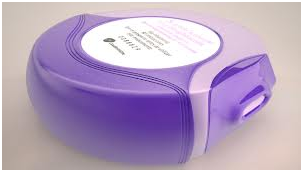
Hold the Accuhaler at its base using one hand
Put the thumb of your other hand on the thumb grip
Open the Accuhaler by pushing the thumb grip around until you hear it click
Slide the lever until it clicks (Your medication is now loaded)
Breathe out away from the Accuhaler
Put the mouthpiece in your mouth and form a good seal with your lips
Breathe in steadily through your mouth
Remove the Accuhaler from mouth whilst holding your breath for up to 10 seconds
Breathe out gently away from the Accuhaler
If further doses are required, push the lever back to the starting position and repeat the above steps
Close the Accuhaler.
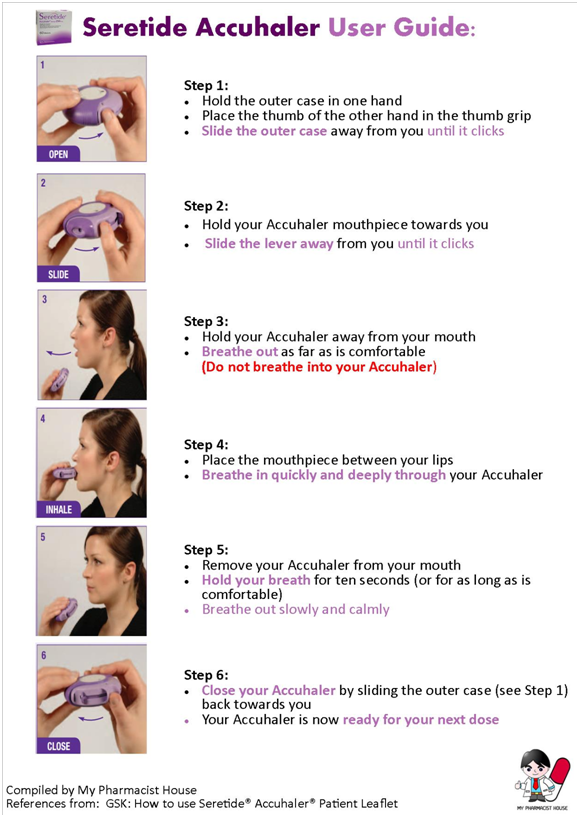


Nebulizers
A nebulizer is a device that changes medication from a liquid to a mist so that it can be more easily inhaled into the lungs.
Nebulizers are particularly effective in delivering asthma medications to infants and small children and to anyone who has difficulty using an asthma inhaler.
Types of Nebulizer

Jet
Function by Bernoulli principle
Compressed gas passes through a constriction undergoes a small reduction in pressure
Thus causing drug solution to be drawn up a feed tube from a reservoir and fragmented into droplets (15-500 μm)
Most of the droplets generated impact on the baffles producing smaller particles which are inhaled or returned to reservoir
Ultrasonic
Work by spray formation from high frequency ultrasonic signal (1-3 MHz) by a piezoelectric transducer




